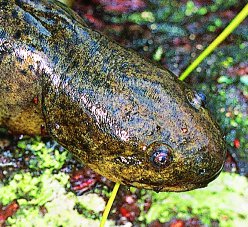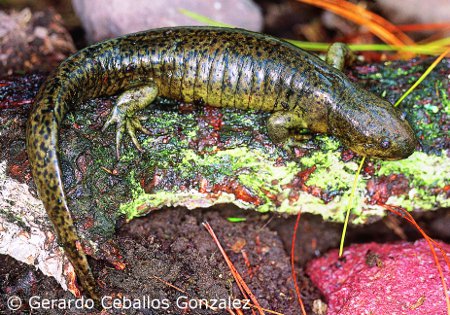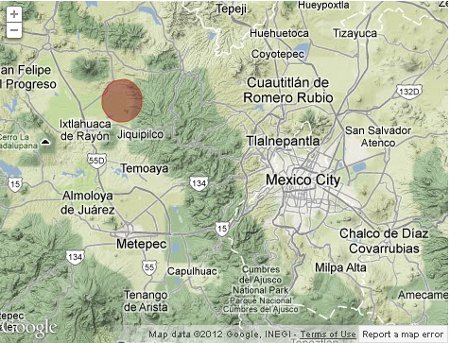 The granular salamander (Ambystoma granulosum) is a very unusual EDGE species. Belonging to the Ambystomatidae (or “mole salamander”) family, which diverged from all other salamanders over 140 million years ago, it is highly evolutionarily distinct.
The granular salamander (Ambystoma granulosum) is a very unusual EDGE species. Belonging to the Ambystomatidae (or “mole salamander”) family, which diverged from all other salamanders over 140 million years ago, it is highly evolutionarily distinct.
This species’ skin is corrugated or granular, especially along the tail, which explains its common name, and it has twelve costal grooves along either side of the body and across the abdomen. Ambystomid salamanders have strong coloured patterns on their adult bodies, and the granular salamander has greenish yellow skins speckled with small black spots.

The granular salamander, like many of its close relatives, is a metamorphosing species, which means that it has two different physical forms: a young, or juvenile form, that has external gills and lives underwater, and an adult form that lives on land. If we look at metamorphosing salamanders in the wild, one population usually contains individuals of both aquatic and terrestrial forms in existence at the same time, which to the untrained eye might look like two different species!
At the end of its juvenile stage, the granular salamander becomes an adult by losing its gills and fins, and replaces these features with eyelids and lungs, moving out of the water and making its home on land. However, even though this salamander adapts to living on land, like many amphibians it must return to water to breed. It finds small, natural or artificial pools and ponds, and lays its eggs in the water before abandoning them: sadly it seems that neither male or female granular salamanders are interested in parental care.
The granular salamander is only known from a small area in Toluca city, in the central State of Mexico, 3,000m above sea level, and there is currently no information available on its population status. The IUCN have listed it as Critically Endangered because it occurs in an area less than 100 sq/km, all individuals are in a single subpopulation, and there seems to be continuing development in and around Toluca City.

Humans have also introduced predatory fish, which are a huge threat, and added to water pollution and habitat degradation it spells disaster for this top EDGE species. Even though it is under special protection by the Government of Mexico, the granular salamander does not occur in any protected areas, so the conservation and restoration of its remaining habitat is an urgent priority in order to prevent its extinction in the wild…